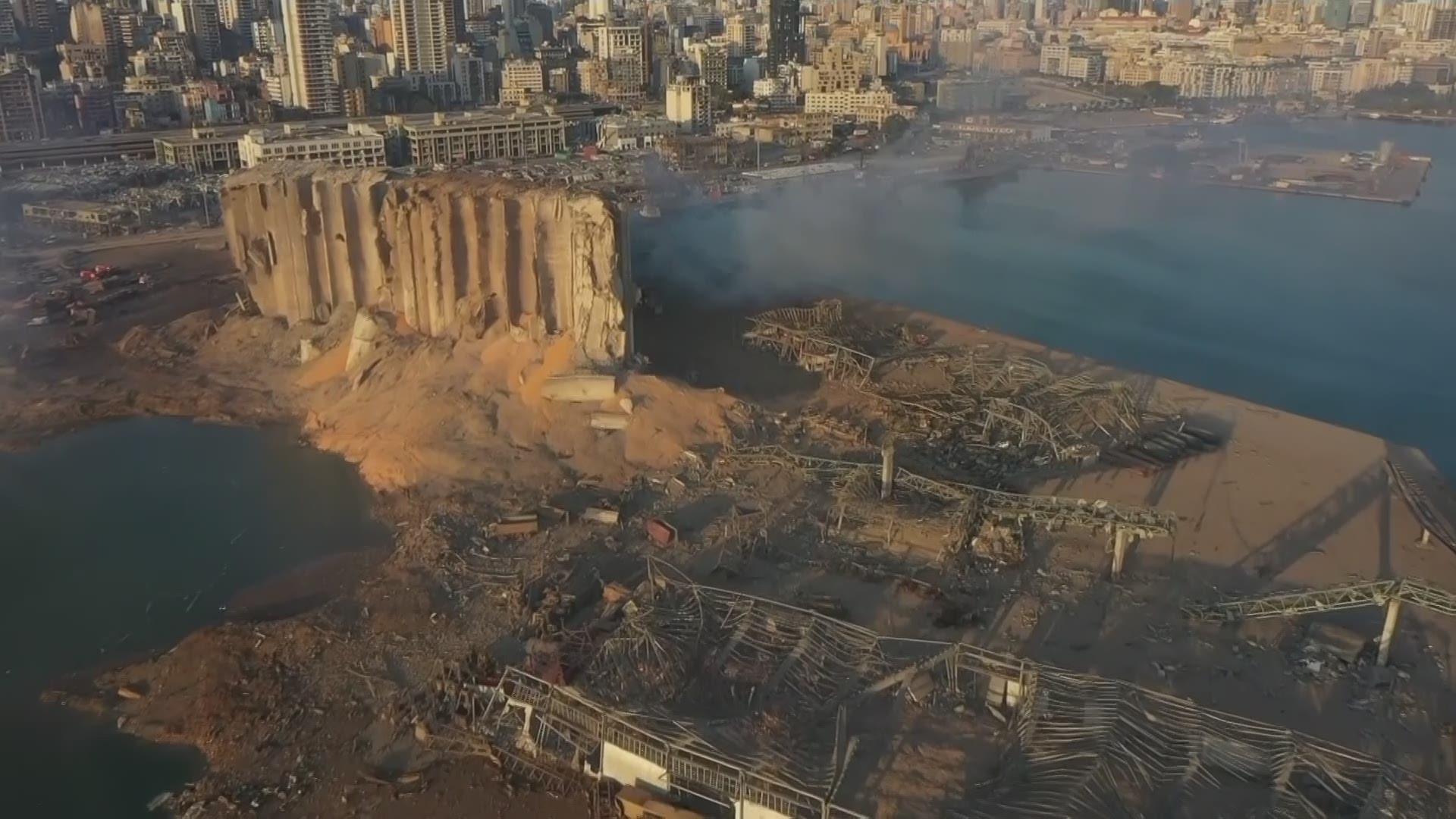WASHINGTON — On August 4, one of the deadliest explosions in modern history rocked the capital of Lebanon, killing more than 140 people and injuring thousands more. The explosion leveled hundreds of buildings – shattering windows and damaging densely populated areas up to 10 miles away.
In order to help contextualize the severity of the blast, WUSA9 mapped what the explosion would look like had it happened here in the District.
What caused the blast?
According to top Lebanese officials, explosive material seized by the government from an abandoned ship was stored in a warehouse in Beirut, where the blasts occurred. Most of the material was ammonium nitrate, a primary compound found in fertilizer that accidentally detonated in a port warehouse. High temperatures from the fire, coupled with small spaces and other explosive materials like fireworks, contributed to the scale of the explosion.
It's not the first time that the chemical has caused catastrophe: A ship carrying the compound in Texas City, Texas exploded in 1947 after catching on fire, killing roughly 500 people and injuring as many as 4,000.
Where in D.C. would be impacted most?
To know what would be impacted the most depends on the exact spot where the explosions detonate. In Beirut, that's the portside warehouse where the compounds were stored.
If we use the Washington Monument as the blast's epicenter, the first 1 km (about .6 miles of the surrounding area) would see the heaviest damage. That means all of the National Mall, the White House and downtown would see the most severe structural collapses, with buildings potentially leveled and those in the vicinity almost instantly killed from thermal radiation or initial impact.
As the shock wave from the initial blast condenses water from the atmosphere, the high-pressure force would continue to blow through the next 5 km.
The second zone of 5 km (roughly 3.1 miles past the monument) would also see intense structural collapses, expanding past the Mall and up near the Smithsonian Zoo. All of the central DC neighborhoods — Capitol Hill, Adams Morgan, Navy Yard, Georgetown, NoMa, Logan Circle, etc. — would be heavily affected, with exteriors wiped and windows shattered.
Glass fragments and parts of buildings blown off from the impact could travel, causing more casualties and injuries from surrounding areas.
Even areas across state lines would see the destruction: At 10 km, cities as far as Arlington and Alexandria or Silver Spring would feel the blast and see the residue smoke.

